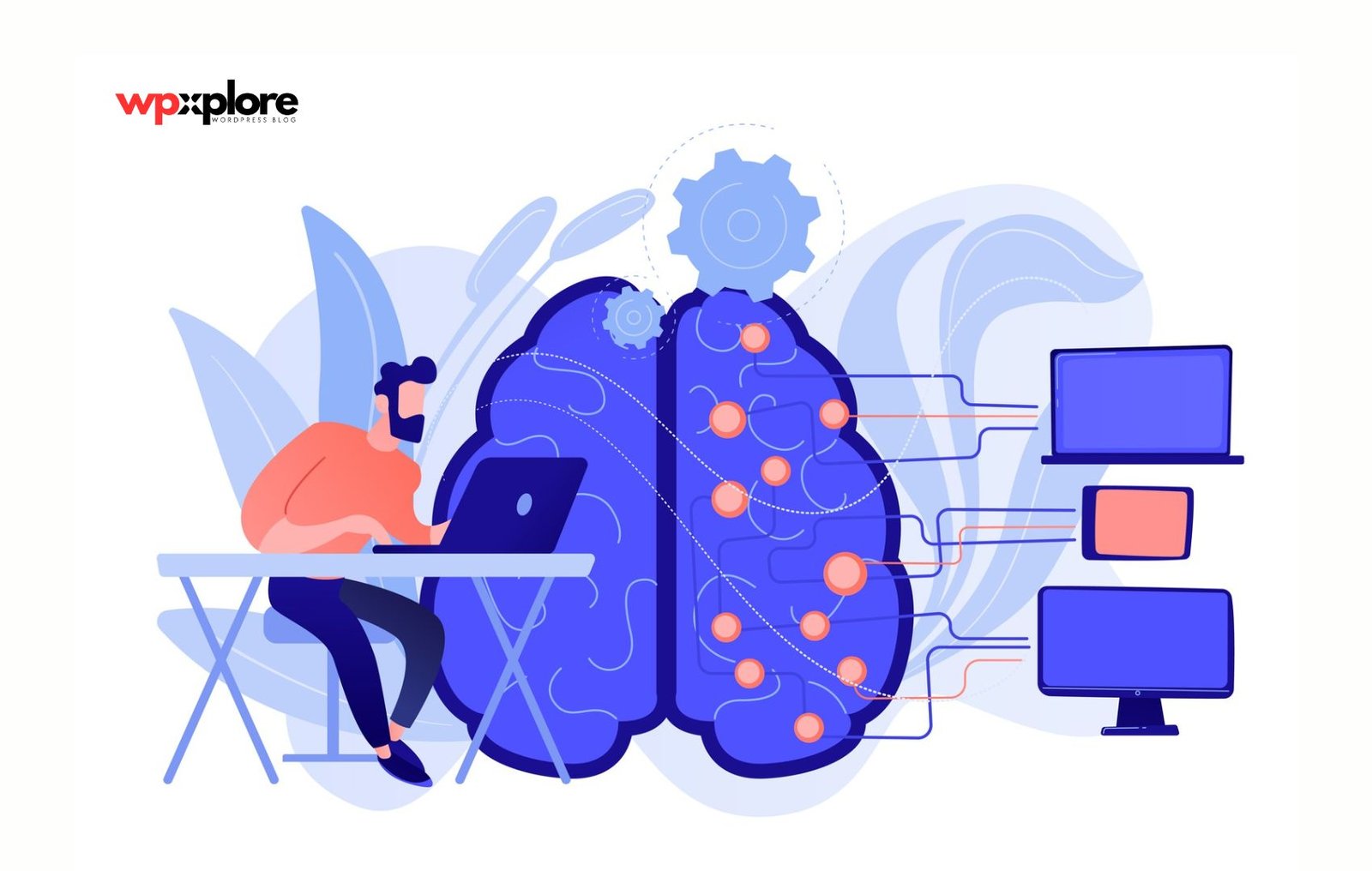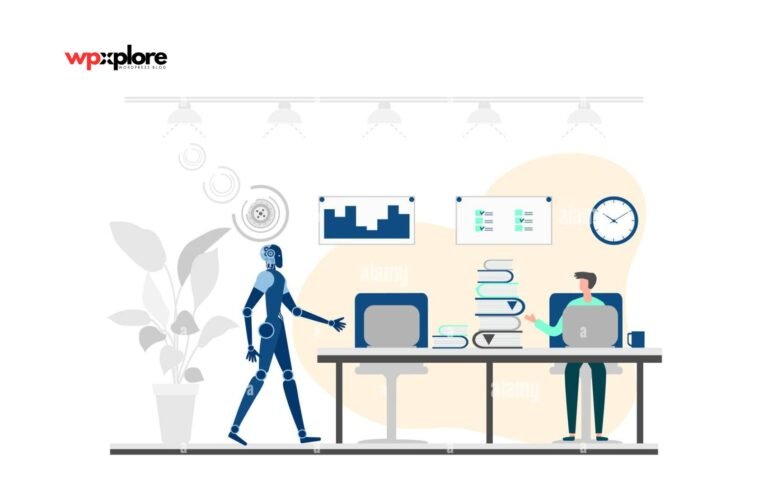Artificial Intelligence (AI), also known as Generative AI, is evolving fast, and the changing technology is quite promising in every sector of our lives. These improvements include the steps through which it has advanced in several areas, like prompt production, data processing, and analysis.
However, a distinction should be made between the current AI and the concepts and ideas being implemented to make it more functional, even though there are some significant concerns that the AI developers still have to resolve over time.
Some of these drawbacks display more prominently in core areas of operation such as health, finance, transport, or decision support, where AI’s inefficiencies may have major impacts.
In this article, we will discuss the limitations of Artificial Intelligence, unsolved challenges, and the realistic outlook for its continued development.
The AI market size is projected to reach $407 billion by 2027
What is Artificial Intelligence?
Contents
- What is Artificial Intelligence?
- Limitations of Artificial Intelligence: The Unsolved Challenges of AI
- 1. Context awareness and reasoning
- 2. Emotional intelligence and empathy
- 3. Creativity and innovation
- 4. Ethical and moral aspects
- 5. Adaptability and learning
- 6. Problems related to data dependency and issues with privacy
- 7. Transparency and explainability
- 8. Physical contact and operations
- 9. Long term strategy
- 10. Human-AI collaboration
- Few Words

Generative AI can be described as an advanced-level computer program with the potential to create content with different input methodologies, including text and live videos. It can also generate code for other models, well-structured articles, realistic images, video, and audio; thus, these are innovative developments in AI. Based on complex learning models, AI is particularly effective in learning, reasoning, problem-solving, translation, and decision-making to some extent.
Still, fast advancement indicates that increasing the use of Generative AI technology may be perceived as unethical because of its possible misuse and negative impacts on employment. That is why, as companies harness the power of generative AI and incorporate it into their daily lives, managers and organizations must confront these challenges and questions by creating robust AI policies and principles of ethical use.
According to a survey, 64% of businesses anticipate that AI will boost productivity
Limitations of Artificial Intelligence: The Unsolved Challenges of AI
Artificial intelligence is a broad term for an advanced intellect that is developing itself in various industries. Nonetheless, like with any other technology, AI has not been absolutely immune to challenges and constraints. In essence, these limitations, from learning the context to making ethical decisions, tend to demonstrate the differences between human and machine intelligence. In this article, let me discuss the limitations of Artificial Intelligence and the important questions AI has yet to solve or answer.
1. Context awareness and reasoning
However, one of the most apparent drawbacks of AI is the lack of understanding of the context and basic sense. AI is good at analyzing big datasets and recognizing patterns but weak at analyzing content and context at a human behavioral level including cultural sensitivity.
For instance, the same sentence such as ‘The chicken is ready to eat’ can be understood in two different ways that is; the chicken is prepared for eating or the chicken is about to feed on something. However, AI may not differentiate between the two when not programmed to do so, making it less useful in situations where contextual understanding is viable.
2. Emotional intelligence and empathy
Emotional intelligence and empathy are aspects that are inherent in humans and have not been incorporated into AI. While AI can interpret written and spoken words to determine present emotions, it is incapable of experiencing them. This becomes quite apparent in professions such as psychology, customer relations, and teaching, where interpersonal engagement is crucial.
For example, an automated conversational system might generate logical answers to a client’s question but lack the empathy a live agent would have. The lack of an emotional aspect means that AI is not as useful when emotions play a critical role.
3. Creativity and innovation
In creativity, it is, to this date, an area that still presents challenges to AI systems despite being dominated by artificial intelligence. However, AI is capable of writing, playing music, and creating artworks; these works take their source from other data and are not made of AI’s ideas. AI cannot create or invent something new – it cannot conceive out of the box and come up with fresh concepts.
For instance, based on data, AI can evaluate thousands of paintings and generate new artwork that imitates a particular style. Still, it cannot perceive the world, emotions, or inspiration that so often is the source of human creativity. This limitation ensures that AI is not a substitute for creativity but an effective means of assisting creative industries.
4. Ethical and moral aspects
New ethical questions arise as AI is being implemented in various decision-making systems, and business decisions, as well as court decisions, can be made by an artificial neural network. Information bias of AI systems can cause unfair and unethical decision-making since AI systems are only as liberal as the data they were trained on.
For example, a decision-making artificial intelligence model used for employee recruiting or loan approvals may negatively impact minorities even if it is built from unbiased parameters. In addition, existing AI systems do not possess a moral foundation that enables them to make decisions that are often found in humans, such as the balance between the general population’s well-being and individual freedoms. This limitation raises pertinent questions on the place of AI in society and the call for more enhanced ethical consideration.
5. Adaptability and learning
Despite the capacity of such systems to learn highly complex specific tasks by being trained through supervised learning, AI does not well generalize and adapt. The majority of today’s AI systems can learn only to perform limited and specific functions, like face or language recognition, but they are incapable of applying learned knowledge to as-yet-unknown problems.
For instance, an AI operating a self-driving car might be optimized for a specific city and the response might be well when tested in that city, however, when tested in a different city with different roads, traffic patterns, or different signs the response can be so poor or even fatal. While people are more adaptable and can learn to cope with any task easily, most AI systems have to be reprogrammed and retaught every time they meet new situations.
Technically, AI was built to gather as much data as possible because the more data there is, the more accurate the results are – which can be seen both as its main advantage and disadvantage. However, it is also a big concern for data security and privacy. Self-learning AI needs to gather a ton of data, which may contain personal information of people to perform their tasks, bringing into account the question of where and how this information is collected and used.
For instance, AI-based healthcare apps, which might always rely on patients’ data to ensure they provide correct diagnoses, will pose some merits to patients’ confidentiality and data security issues. The pros and cons of employing artificial intelligence have undoubtedly been established in the public sphere, but concerns about people’s privacy being violated persistently.
7. Transparency and explainability
It took me some time to understand, but it’s widely agreed that AI decision-making processes are hard to explain. This is a major weakness because it affects many sensitive sectors, such as health, financial, and criminal justice systems, where decisions may drastically affect people’s lives.
For example, if an AI system is used to reject an applicant’s loan request, the applicant will not be able to know why the request has been rejected, which will frustrate him/her and make him/her uncomfortable transacting with the organization. Increasing transparency and explainability of AI systems is one of the key problems of the modern world since people require trust in AI and its decision-making processes.
8. Physical contact and operations
An area where AI has made progress is robotics; however, in regards to activities based on the perception-action cycle, AI remains very weak, especially in the use of hand for grasping objects with precision. Accurately delaying repetitive recovery is achievable with robots supported by AI, but precise control of complex physical tasks that appear to be tough is not efficiently achievable.
For instance, a robot that is programmed to work within a factory environment may be able to assemble a car, but it would not be aware of how to fold clothes or prepare a meal. This limitation constrains AI in areas where sensitive physical involvement is necessary like in healthcare and eldercare.
9. Long term strategy
Another important point is that AI is usually rather good at providing deterministic solutions to particular problems, provided that these problems are clearly framed and fall within a certain set of rules; however, AI cannot think ahead and make strategic decisions. While humans can see the long-term impacts and consequences of the current situation, AI can’t handle so many processes and work simultaneously.
For example, an AI system that applies profit-optimal decision-making for a company may make decisions that are beneficial in the short term but have very negative impacts on the company itself in the long term. This limitation underlines that even in the case of utilizing effective tools for decision-making, there is a need for human control.
10. Human-AI collaboration
The most difficult element is synchronizing the human and artificial intelligence working processes. Because AI is a way of enhancing human performance, it cannot mimic teamwork, communication, and goal orientation as human beings do.
For instance, AI can help a doctor diagnose a disease. Still, it can never be part of the inclusive process of formulating a treatment plan, considering the patient’s preferences, lifestyle, and mental state. Improving human-AI partnership entails not merely developing increasingly sophisticated technologies but also a greater appreciation of how this union might be achieved.
Few Words
While AI has significantly developed in recent years, it is essential to identify the limitations of Artificial Intelligenceits. From understanding context and applying common sense to ethical decision-making and collaboration, AI has a long way to go before it can match the full spectrum of human intelligence.
Addressing these challenges will require continued research, but more importantly, it will demand strict ethical supervision to ensure that AI is developed and deployed responsibly.
By acknowledging and addressing the limitations of Artificial Intelligence, we can harness its potential while ensuring that it serves as a tool to augment human capabilities rather than replace them. Human-AI collaboration is not just a challenge but a crucial aspect of AI’s future, and it is our collective responsibility to ensure that it is enhanced and utilized effectively.
If you have any questions or want to share your perspective on AI and the limitations of Artificial Intelligence, please leave a comment below.







Leave a Comment